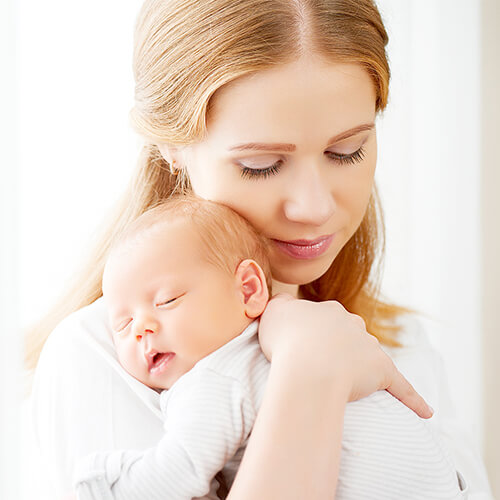Laparoscopy for Infertility
A Complete Guide
Infertility is an emotional as well as a medical challenge, affecting nearly one in six couples globally. While medications, lifestyle changes, and assisted reproductive technologies like IVF treatment and IUI treatment are often used, sometimes the root cause of infertility lies hidden inside the pelvis. These hidden problems cannot be detected through ultrasound or blood tests alone. Laparoscopy for infertility has become one of the most important tools in modern gynaecology to both uncover and treat such conditions.
At Excel IVF in Delhi, under the guidance of Dr. Rhythm Gupta, laparoscopy has helped hundreds of women improve their chances of conceiving naturally and increase the success of IVF.
What Is Laparoscopy for Infertility?
Laparoscopy is a minimally invasive surgical procedure performed under anaesthesia. It involves inserting a laparoscope, a thin tube with a high-resolution camera, into the abdomen through a small incision. This allows doctors to directly examine the uterus, fallopian tubes, ovaries, and surrounding organs in real time.
Types of Laparoscopy for Infertility
- Diagnostic Laparoscopy: Used to detect hidden conditions that may cause infertility. It helps identify endometriosis, fibroids, tubal blockages, ovarian cysts, and adhesions.
- Operative Laparoscopy: If an abnormality is detected, the surgeon can immediately treat it during the same procedure. Fibroids, endometriosis patches, adhesions, or blocked tubes can be surgically corrected.
Why Laparoscopy Matters for Infertility
- Ultrasound and X-rays may miss early-stage endometriosis or thin adhesions.
- Laparoscopy allows magnified visualization of reproductive organs.
- It gives both diagnosis and treatment in a single procedure.
In short, laparoscopy is the gold standard for detecting unexplained infertility.
How Laparoscopy Helps in Infertility Treatment
Laparoscopic surgery for infertility serves a dual purpose: it not only diagnoses infertility causes but also corrects them immediately, increasing the chances of pregnancy.
Conditions Diagnosed and Treated
- Endometriosis: By removing endometrial implants and scar tissue, laparoscopy improves natural conception and reduces pain.
- Fibroids: Laparoscopic removal of fibroids restores the uterine cavity, enabling implantation.
- Blocked Fallopian Tubes: Procedures like tuboplasty can reopen blocked tubes and restore natural fertility.
- PCOS (Polycystic Ovary Syndrome): Ovarian drilling through laparoscopy can help induce regular ovulation in women resistant to medication.
- Pelvic Infections and Adhesions: Scar tissue caused by past infections or surgeries can be removed to improve reproductive anatomy.
Why Surgery is Sometimes Essential
For many women, medications alone cannot address the root cause. Surgical correction through laparoscopy ensures long-term benefits and improves outcomes with or without IVF.
Step-by-Step Laparoscopy Procedure
Patients often feel anxious about surgery, but understanding each step helps relieve fear.
Pre-Surgical Preparation
- Fasting is required for 6–8 hours.
- Routine blood work, ECG, and anaesthesia clearance are done.
- The procedure is scheduled in the follicular phase (first half of the menstrual cycle) for better visibility.
Anaesthesia and Incision
- General anaesthesia ensures the patient is completely comfortable.
- A small 1 cm incision near the navel is made. Sometimes, 1–2 smaller incisions are added for instruments.
Inspection of Organs
- The laparoscope camera projects magnified images onto a monitor.
- Doctors carefully examine the uterus, ovaries, tubes, and pelvic cavity for abnormalities.
Treatment if Required
- Endometriosis lesions are excised or cauterised.
- Fibroids or cysts are removed.
- Blocked tubes are cleared or surgically reconstructed.
Closure
- Instruments are withdrawn.
- Stitches or surgical glue close the small cuts, leaving almost no visible scars.
Cost of Laparoscopy for Infertility in Delhi
The cost of laparoscopy infertility treatment in Delhi depends on diagnostic vs operative laparoscopy, hospital facilities, and the complexity of treatment.
- Diagnostic Laparoscopy: ₹80,000 – ₹1,00,000
- Operative Laparoscopy: ₹1,00,000 – ₹2,00,000
At Excel IVF, we ensure transparent pricing with no hidden charges and offer affordable laparoscopy packages.
Recovery After Laparoscopy for Infertility
Recovery is usually quicker than traditional open surgery because the incisions are small.
Recovery Timeline
- Return to normal routine: 3–5 days after diagnostic laparoscopy.
- Full recovery: 1–2 weeks after operative laparoscopy.
- Minimal pain and scarring, often controlled with oral painkillers.
Post-Surgery Care
- Eat light, easily digestible food for the first 2–3 days.
- Avoid lifting heavy weights and strenuous activity for 2 weeks.
- Regular follow-ups to check healing and discuss conception plans.
- Watch for warning signs like fever, excessive pain, or unusual bleeding.
Success Rate of Laparoscopy for Infertility in Delhi
The success rate of laparoscopy for infertility depends on the underlying condition:
- Endometriosis Removal: 30–50% of women conceive naturally within 12 months.
- Fibroid Removal: Significantly improves chances of successful implantation.
- Blocked Tube Correction: Restores the possibility of natural pregnancy.
- PCOS Drilling: Induces ovulation in 70–80% of women who do not respond to medication.
When combined with IVF, laparoscopy greatly improves implantation and pregnancy outcomes.

Risks of Laparoscopy in Infertility Treatment
Although laparoscopy is generally very safe, like any surgical procedure, it carries some risks:
- Minor bleeding or infection
- Damage to nearby organs (rare with expert hands)
- Reactions to anaesthesia
- Formation of scar tissue (adhesions)
At Excel IVF, risks are minimised with experienced surgeons, advanced equipment, and strict protocols.
Laparoscopy for PCOS, Endometriosis, Fibroids, and Tubes
Laparoscopy is versatile because it treats a wide range of infertility causes:
- PCOS: Ovarian drilling helps women ovulate regularly.
- Endometriosis: Removal of lesions reduces pain and restores fertility.
- Fibroids: Removal of submucosal and intramural fibroids improves implantation rates.
- Blocked Tubes: Laparoscopy allows adhesiolysis and tubal surgery to restore natural function.
IVF After Laparoscopy
Many couples ask whether IVF should be planned after a laparoscopy.
- Fibroid Removal and Adhesiolysis: Improves the uterine lining for embryo implantation.
- Endometriosis Treatment: Enhances egg quality and improves IVF outcomes.
- Tubal Repair: May allow natural conception first, reducing the need for IVF.
In most cases, IVF after laparoscopy offers better pregnancy rates than IVF without surgical correction.
Take the First Step Toward Future Parenthood
Explore Your Options Here
- Female Fertility Tests in Delhi
- Male Fertility Tests in Delhi
- Hysteroscopy Procedure in Delhi
- Natural Pregnancy in Delhi
Call +91-8920963596
FAQs on Laparoscopy for Infertility
Not every couple needs a laparoscopy. It is recommended when infertility remains unexplained after routine investigations, or when conditions like fibroids, ovarian cysts, or endometriosis are suspected. It is not a first-line test but a specialised tool.
Women can usually try to conceive within 2–4 weeks after recovery. For IVF cycles, doctors may wait for one complete menstrual cycle to allow healing. The exact timeline depends on the surgery performed and individual recovery.
In many cases, yes. If infertility is due to endometriosis, fibroids, or blocked tubes, laparoscopy can correct the issue. However, age, egg reserve, and sperm quality still play key roles. For some patients, IVF may still be required.
Recovery is smooth. Patients can walk on the same day and resume routine work in 3–5 days. Full recovery usually takes 2–3 weeks. Mild cramps, shoulder pain (from the gas used), or bloating are temporary.
The procedure itself is painless because it is done under anaesthesia. Some women may feel soreness at the incision site or mild abdominal discomfort afterwards, but these symptoms resolve quickly with simple pain medications.
Costs range between ₹35,000 and ₹1,00,000+, depending on whether it is diagnostic or operative. The type of treatment required, hospital facilities, and medication costs may add to the bill. Excel IVF provides transparent, affordable pricing.
Yes. By correcting uterine abnormalities, removing endometriosis, or clearing blocked tubes, laparoscopy creates a healthier reproductive environment. This not only improves the chances of natural conception but also enhances the success rates of IVF and ICSI.

